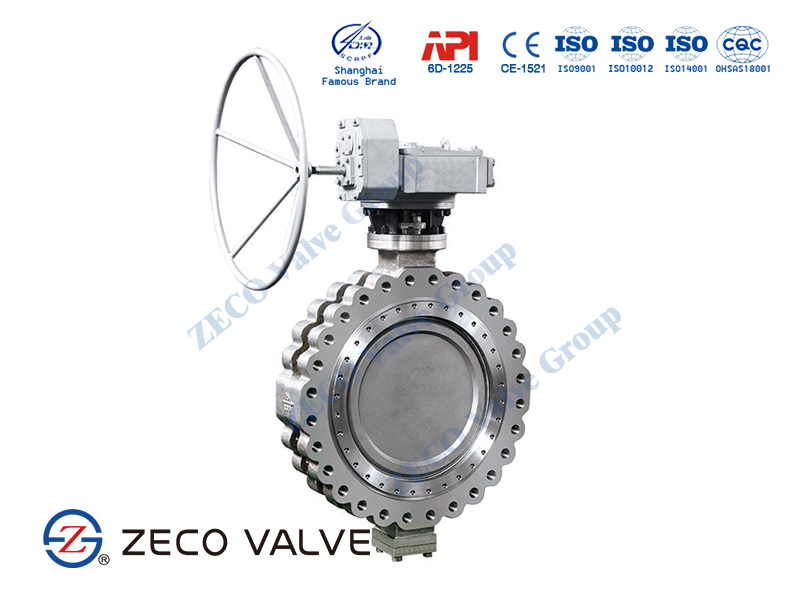HOTLINE: +840902720814

Double Offset Butterfly Valve is design offers rugged reliability and extremely easy maintenance in the field.
Double offset butterfly valve is popularly known as a high-performance butterfly valve and has two offsets from the valve body’s center:
The position of the disc in a double offset butterfly valve creates a cam action when the valve operates. The seat is lifted from the seal which results in the occurrence of friction on the first 10° and final 10° of the opening and closing operations.
The movement of a double offset butterfly valve follows a conic profile in sealing the valve. The arrangement of the offsets of the disc and the shaft generates a cam action of the disc into the seat, reducing the required torque to close or open the valve.
This offset geometry also allows the 90° rotation of the disc to get into contact with the seat on the first 1° to 3° of rotation only. Moreover, the design of double offset butterfly valves minimizes wearing at the touch points of the seat and disc which happens in conventional butterfly valves.
When the valve is opened, the upper and lower ends of the butterfly disc are no longer as laborious as the center line butterfly valve, but the friction with the seat still exists. The improved feature of the double offset butterfly valve is that the stem axis deviates from the center of the disc and the center of the stem itself, just like the single eccentric butterfly valve. Such a structure can make the disc escape from the seat immediately after the valve is opened, and there will be no friction between the disc and the seat after the single eccentric butterfly valve is opened.
The wafer type of the double offset butterfly valves is constructed to provide a strong sealing, safeguard against bi-directional pressure differentials, and to prevent any backflow in devices that were built for unidirectional flow. This is done by the use of a tightly fitted seal material, such as an O-ring, or gasket, precisely machined, along with a smooth valve face on the downstream and upstream parts of the valve.
In the lug body type of the double offset butterfly valve configuration, one end of the pipeline can be removed without impacting the other side of the valve. This can be achieved with threaded inserts, flanges, and two sets of lugs (bolts) that do not use nuts so each flange has its bolts. In a Lug type connection, you do not have to shut down the whole device to inspect, clean, repair, or replace the lug butterfly valve.
The flanged double offset butterfly valve uses a flange at both ends of the valve to be attached to pipe flanges. This type of end connection is used for the very large size of the butterfly valve.
The welded end double offset butterfly valve is used where the system is under very high pressure. These types are generally used for small-size butterfly valves.
The double offset butterfly valve is generally used in:
| No | Part | Material |
| 1 | Body | ASTM A351 CF8 |
| 2 | Seal Ring | PTFE |
| 3 | Retainer Flange | ASTM A182 F304 |
| 4 | Pin | ASTM A276 304 |
| 5 | Disc | ASTM A351 CF8 |
| 6 | Stem | ASTM A276 304 |
| 7 | Stem Packing | PTFE |
| 8 | Stem Beating | SS304 + PTFE |
| 9 | Bolt | ASTM A193 B8 |
| 10 | Nut | ASTM A194 8 |
| 11 | Yoke | ASTM A351 CF8 |
ZECO Valve is a manufacturer specializing in the production of butterfly valves for high temperatures, and the double offset butterfly valve with RPTFE seat is more conducive to 230℃ condition, which has contributed to the application of double eccentric butterfly valves in the high temperature field.

Nhập email của bạn để nhận thông báo sớm nhất của chúng tôi
